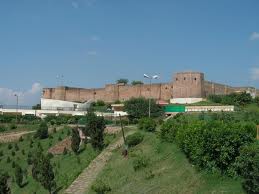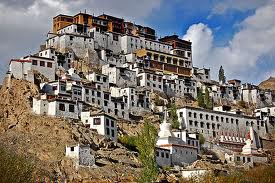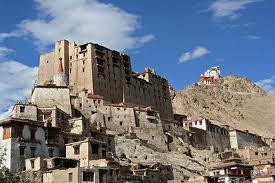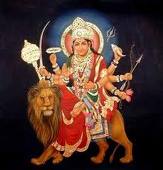Huge mountains...roads...all covered with snow...Here you have landed in Ladakh! The northernmost state is an integral part of Jammu and Kashmir. People in this valley are very simple and have descended from Indo-Aryan and Tibetan origin.
Basically Ladakh consists of two districts, namely, Leh and Kargil. Leh is popular as the largest district with an area of 45110 Sq Km whereas Kargil gained much fame after the popular Operation Vijay or Kargil war between India and Pakistan in 1999.
Since this geologically termed young land lies at a height of about 9,000 feet above sea level the maximum summer temperature is 27°C, while in winter the temperature may drop down to -20°C.
The icy land is bounded by the mighty Himalaya and the Karakoram one side while the Ladakh range and the Zanskar range lies on the other side. The mountains here offer great trekking experience on interesting trekking routes. Trekkers can enjoy the sheer natural beauty closely through the mountainscape.
Many rare species of wild animals like gazelles, ibex, ammon, shapo etc. are found in wildlife rich Ladakh. The place has now appeared as a favourite tourist destination.
Places to see in Ladakh
MonasteriesMonasteries are the places of worship and residence of Buddhist community. Ladakh has numerous monasteries built by different orders. These aesthetically designed monasteries situated on the isolated hillock are pleasing and interesting structures. They are circumscribed with mane walls of votive stones on which prayers and holy figures are inscribed, and Chortens that are semi religious shrines.
Major of other than in Shey Place and Stok place are - Bardan Monastery, Stongde monastery, Karcha monastery, Zongkuyl monastery, Wanla monastery, Likir monastery, Alchi monastery, Lamayuru Monastery, Rizong Monastery, Phyang monastery, Spituk monastery, Tresthang monastery, Thiksay monastery, Stakna monastery, Hemis monastery, Chemday monastery, the monastery of Takthok and Matho monastery.
Leh PalaceThe nine storied Leh Palace or "Lhachen Palkhar" was built by Dharmaraja Singey Namgial in 1600. The upper floors were accommodated by the royal family whereas the lower floors were used as stables and store rooms. Now Archaeological Survey of India refurbishes the palace. The visitors can enjoy panoramic views of Leh and the surrounding areas from here.
Stok PalaceThe palace served home to the royal family when Dogra forces invaded Ladakh in 19th century and deposed off the king. The Palace also has Museum that should be visited. It showcases approximately 400 years old royal thankas, crown jewels, dresses, coins, parkas and religious objects.
Shey Place & MonasteryToday the palace and monastery is seen as ruins on hillock situated 15 kilometres to the south of Leh. The palace was built by the King Deldan Namgial as summer retreat in early part of the 17th century AD.
The huge copper gilded statue of Buddha Shakyamuni, is stalled in this monastery which was erected by King Deldan Namgail in the memory of his father Singay Namgail.
Basgo RabtanThe castle known as Basgo Rabtan Lhartsekhar is situated on a hill is built by Dharmaraja Jamyang Namgial and Singay Namgial. The two storey high Maitreya Buddha statue of copper and another one 3 storey high is made of clay can be seen at the citadel.
Use India Hill Station guide if you are visiting hill stations of India. Ladakh Leh Hill Stations information is here.










Wild Life Parks